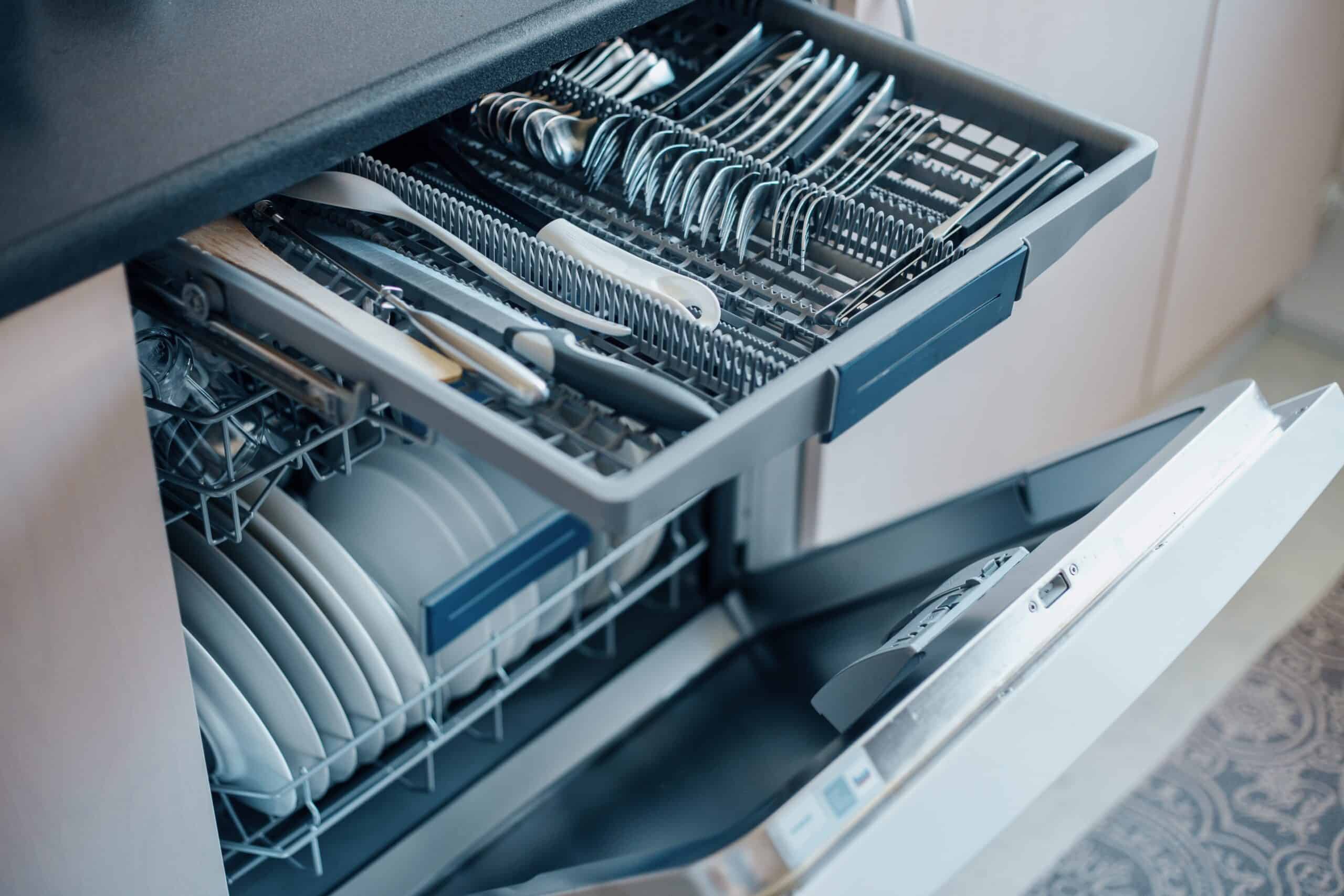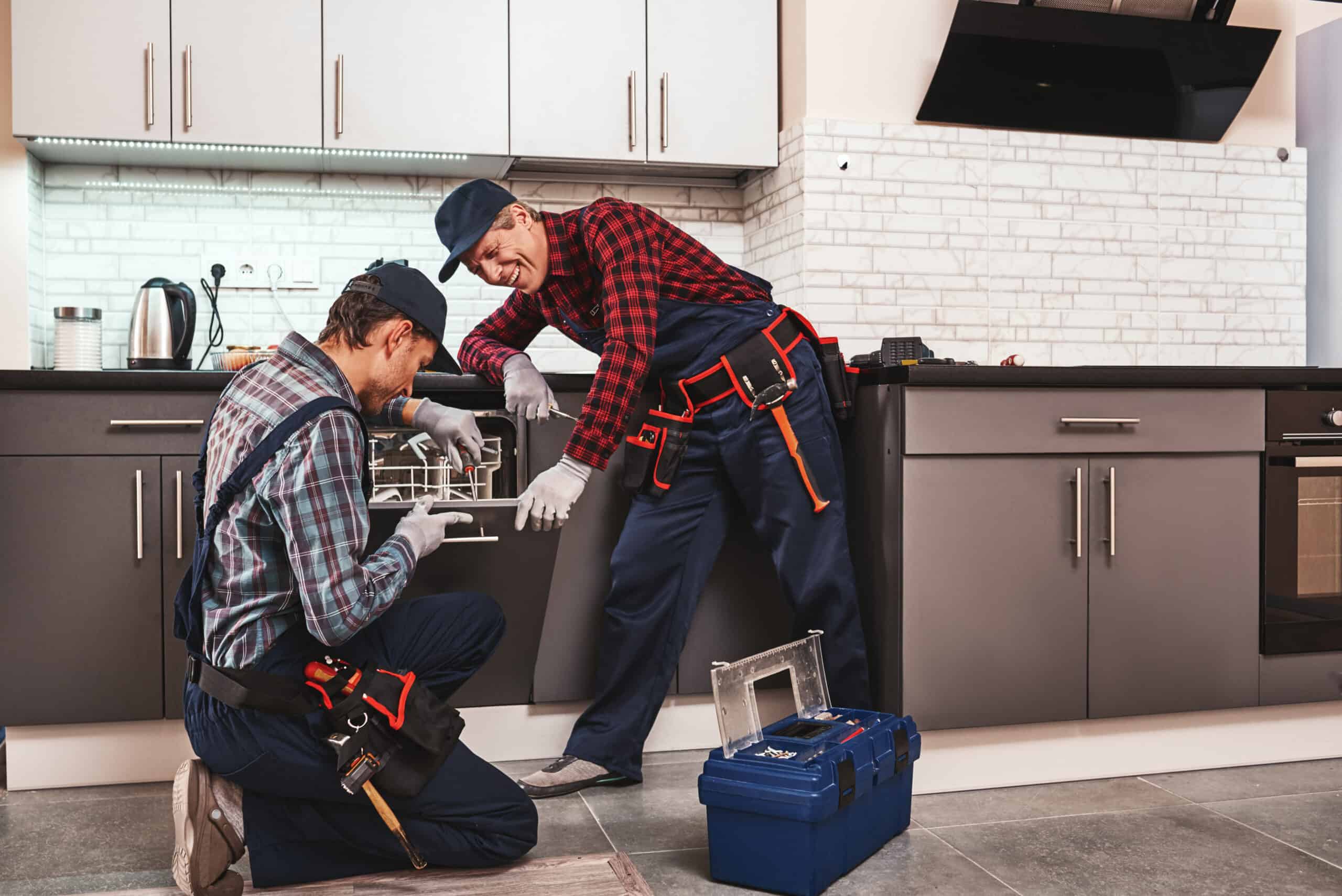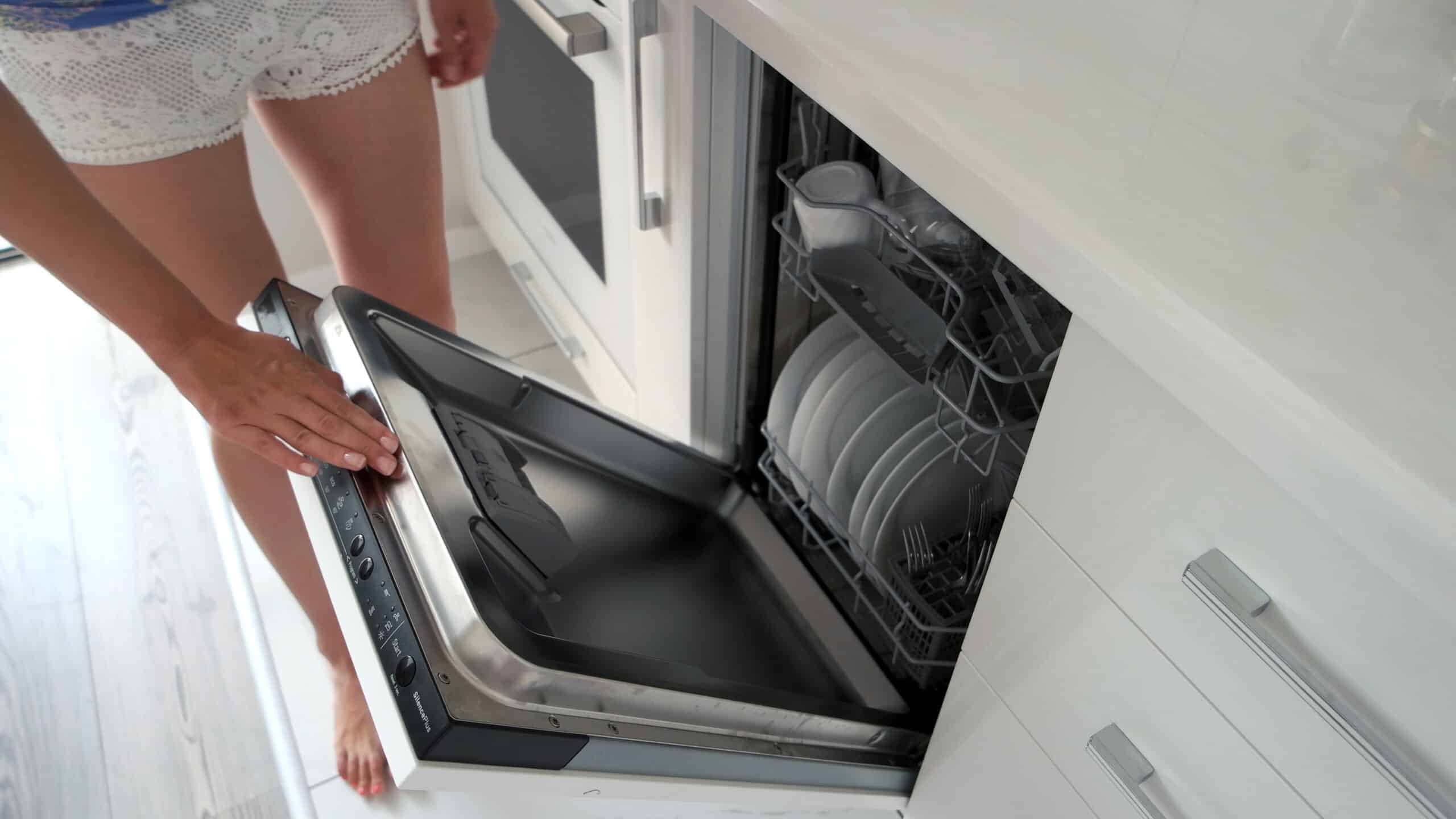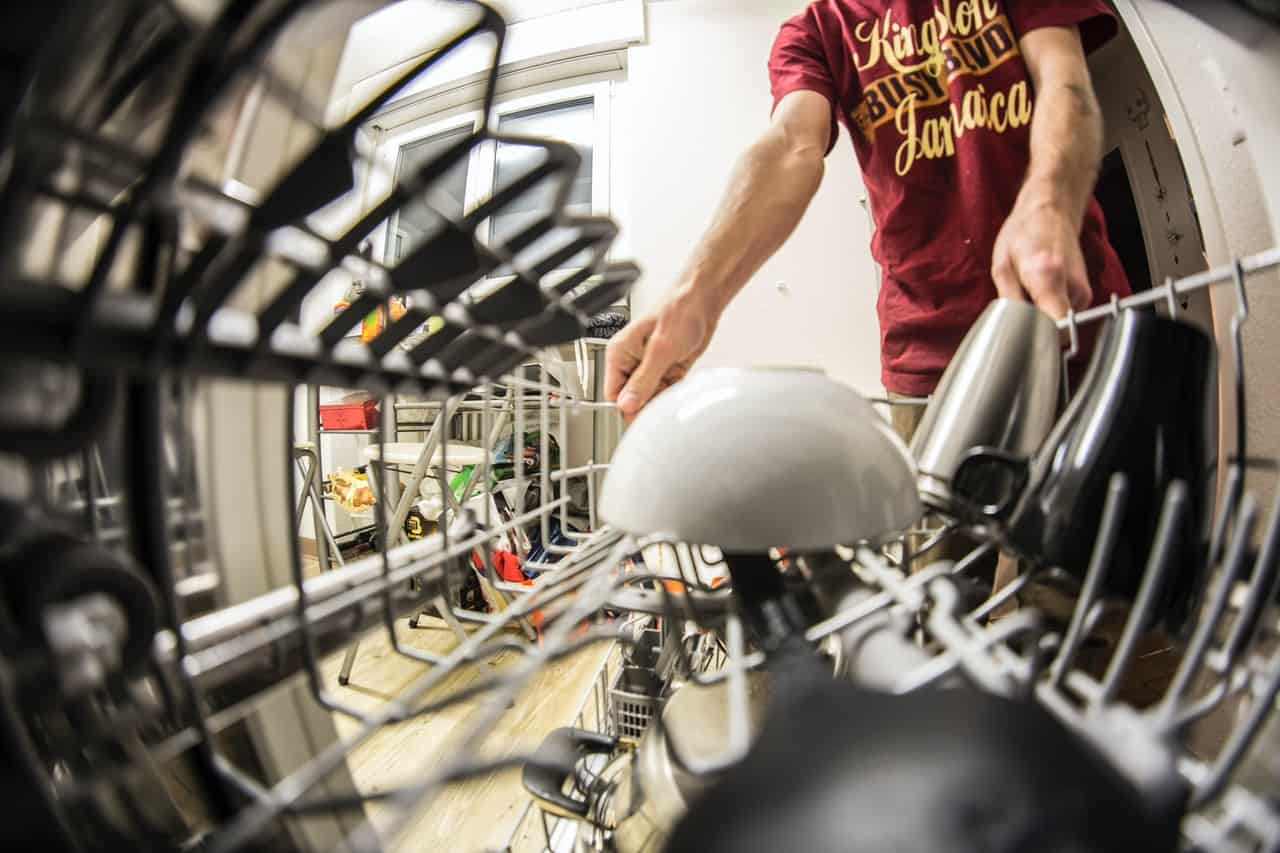- Amana Washer Troubleshooting Guide - October 20, 2022
- GE Dishwasher Not Draining Troubleshooting Guide - October 13, 2022
- GE Dryer Belt Replacement Guide - October 6, 2022
Dishwashers are designed to clean and dry your dishes at the push of a button. Since they have become a staple in most households, cleaning and drying your dishes has never been easier. However, like all appliances, dishwashers run into trouble from time to time and need repairs. One of the most common problems with dishwashers is that they fail to dry your dishes from time to time completely.
Your dishwasher not thoroughly drying your dishes is a fairly common problem across the board, and Whirlpool dishwashers are no different. Several things can cause your dishwasher not to dry your dishes. Some are mechanical, part problems, and others are habits and things you can do differently as a homeowner.
In this article, we will look at each of the things you can do wrong and each of the parts that can malfunction. I’ll also explain how you can resolve each issue and what you need to do to get your dishwasher working as it should.
The Main Reason That My Whirlpool Dishwasher Isn’t Drying
When it comes to your dishwasher failing to dry your dishes, there are nine main reasons it’s malfunctioning. Five of them are things you can do differently with the loading process, and four of them are part problems that you’ll need to repair or replace. Here are each of the nine issues and how to fix them.
Things You’re Doing Wrong With Your Dishwasher
Here’s a list of the five things that you might be doing wrong when it comes to loading and operating your dishwasher.
Improper Loading of Your Dishes
You can do two things wrong when loading dishes into your dishwasher: improper loading and overloading. However, both of them will have the same result in that your dishes will struggle to get dry. Your dishwasher can only handle so many dishes at a time.
If you start stacking things on top of each other and playing a game of dishwasher Tetris, your dishes will all pay the consequences. Here is the best way to disperse dishes throughout your dishwasher.
Proper Loading Procedure
When you load things like cups and bowls into your dishwasher, make sure that you turn them upside down so that the insides get washed.
If you leave them turned right side up, they’ll fill with water and stay filled until you unload them and dump them out. Water in your dishwasher gets dispersed throughout its interior. Once the water is inside a container, there isn’t a mechanism that sucks water up and out of it. Dishes will only dry off if they’re turned the right way.
Problem with Overloading
When you overload your dishwasher, the result is that air isn’t circulated adequately throughout the inside. The best way to improve airflow and prevent dishes from not drying is to ensure that the plates aren’t touching each other and impeding the drying process.
Special Care For Plastic Items
Most plastic items are dishwasher safe, but they do have some problems that are unique to them. Moisture clings to plastic more than it does to other things like glass, and they are the most common culprit when it comes to wet dishes. If you want to be thorough, hand dry your plastic dishes or set them out to air dry. All dishwashers will struggle to dry plastic items completely.
Not Using a Rinse Aid Agent
Rinse aid is your best friend when it comes to rinsing and drying your dishes. Don’t let the name fool you. Rinse aid is essential to drying your dishes just as much as it is for rinsing. Rinse aid and similar agents alter the surface tension of dishes that it comes into contact with. It works similar to how rainex works on a windshield in that it repels water droplets that come into contact with dishes in the dishwasher.
The Water Isn’t Hot Enough
Another common issue with Whirlpool dishwashers not drying adequately is that your water might not be hot enough. The reason that water temperature matters is because hot water evaporates faster than cool or even warm water. The perfect water temperature for dry dishes is 120 degrees Fahrenheit. You can turn the temperature of your water up by raising the temperature setting on your water heater.
Improper Unloading of Dishes
Unloading your dishes wrong might sound like a silly reason that some of your dishes aren’t dry enough, but it does indeed have an impact. The best way to unload your containers after you wash them is from bottom to top, in case the top items are still wet. Unloading wet dishes from the top rack will cause water to drop down onto the dry plates on the bottom shelf.
The Dishwasher Is In the Wrong Setting
Your Whirlpool dishwasher has multiple heat and dry settings depending on which model you purchase. Most of them will have settings ranging from high to low to quick. If you feel like your dishes aren’t drying enough or fast enough, try changing the setting to a higher one.
Mechanical or Part Problems
Aside from things you can do differently in your loading and unloading process, some issues can happen with your parts. Dishwashers are composed of a series of belts, wires, hoses, and clamps, and there is any number of things that can go wrong. Here are some of the most common mechanical issues that will lead to failure to dry dishes.
Vent Door
A fairly standard feature on most Whirlpool dishwashers is something called the vent door. It works similarly to a dryer vent in that it opens and closes to let warm air escape to dry efficiently. There’s a chance that the vent door on your dishwasher isn’t opening, which will mean that the steam and heat won’t be able to escape the inside of the washer. You’ll need to fix or replace the vent door if it isn’t opening correctly.
Dryer Vent Motor
While not all dishwashers have this feature, it’s pretty standard on Whirlpool units. The purpose of the dryer vent motor is to speed up the drying process and quickly propel air out of the dishwasher through the vent door. If the engine gives out, your dishwasher will still dry your dishes. It will just take much longer to do. I’ll go into more detail later about how to test and repair your dryer vent motor.
Heating Element
Heating elements are commonly found on the older Whirlpool dishwashers but not on the new ones. If you have a newer model, then it likely doesn’t have a heating element to go bad.
However, if you have an older one, there’s a chance that the heating element has gone bad, which means that your water inside the dishwasher won’t heat up enough to turn it into steam. As a result, most of the water will sit at the bottom of the dishwasher and impede the drying process of your dishes.
Heating Element Assembly
The heating element assembly consists of wiring, a thermostat, a control board, and a limit switch. If the heating element is working correctly, there’s a good chance that one of these other components has gone wrong. To test them out, you’ll need an electrical tester and a voltmeter to make sure everything has power running to it. By checking each component individually, you can narrow down the options and get to the bottom of the issue.
How to Fix Broken Parts
If you’ve tested each component and realize that the issue is a mechanical one, I’m going to explain how to troubleshoot and repair each problem.
Heating Element
Before checking whether or not your heating element is working and has power running to it, make sure that you turn the power off. Your dishwasher is an electronic appliance, and messing with the wiring components with the power turned on can lead to electrical shock. Electrical shock can injure you or damage your machine. Here’s a step-by-step process of how to check your heating element.
- Ensure that you turn the power off to the dishwasher.
- The heating element is on the inside of your dishwasher at the bottom of the unit. You may have to remove a protective cover to gain access to it.
- Your heating element will be wired up with several wires composing a harness. To remove the harness or otherwise disconnect the cables, firmly grasp the harness portion but avoid grabbing the wires themselves. Pulling on the wires can damage them and ruin your heating element even more.
- To test the electricity of the element, you’ll need to consult your owner’s manual to know what the multimeter numbers should be. Once you see what the setting should be, check the connectivity of each terminal by putting one of the multimeter’s probes to it.
- If you test each terminal and discover that even one of them is off, you’ll need to replace the heating element with a new one.
Rinse Aid Dispenser
A problem with the rinse aid dispenser happens when the rinse aid doesn’t get dispersed throughout the dishwasher. If this happens, the rinse aid won’t alter the surface tension of the dishwasher’s contents, therefore hindering the drying process. Here’s how to check your rinse aid dispenser for problems.
- Checking the rinse aid dispenser is relatively straightforward. It won’t require you to take anything apart or disassemble your dishwasher. You don’t even need tools to conduct your inspection!
- If you regularly utilize your rinse aid dispenser, then you should know where it is. Just in case you forgot, however, the rinse aid dispenser is on the inside of the dishwasher door next to the soap dispenser. To access it, remove the rinse dispenser cap.
- Inspect the rinse aid chamber for any signs of damage. Damage can come in the form of discoloration, melted plastic, or warping of any type.
- If you discover a problem with the rinse aid container hindering its dispersal, you’ll need to replace the dispenser.
Dishwasher’s Thermostat
The thermostat is called the high-limit thermostat and acts as a safety device to keep your dishwasher from overheating. If there’s a problem with the thermostat, then there’s a chance that it could act up and turn the dishwasher off prematurely because it thinks that it’s too hot. Here’s how to check the thermostat to make sure it’s working.
- Once again, there is electricity flowing to the thermostat, so make sure that the power is disconnected before testing it.
- The thermostat is at the bottom of most Whirlpool models behind an access door. You’ll have to remove the thermostat to gain access to the parts that you need to test.
- Take your multimeter and put the setting to Rx1 just as you did when you tested the heating element. Put the multimeter probes to each terminal end to check for continuity.
- If your thermostat isn’t getting the proper readings according to the owner’s manual, then you’ll need to replace the thermostat with a new one.
Dryer Vent Door
Your dryer vent door often has flappers or a lever that allows it to open and close on its’ own. There’s a chance that something is impeding the flapper door and not allowing it to open.
If it doesn’t open, you’ll need to dislodge whatever is blocking the door or replace the door itself. It isn’t difficult to replace the dryer vent door. All you need to do is make a note of what model your dishwasher is and order the replacement part. The vent should detach fairly easily. Once it’s removed, install the new door exactly as you took the old one off.
Dryer Vent Motor
To check the fan motor for problems, you’ll need to check that there’s electricity flowing to the motor itself. Ensure that you follow the same precautions of disconnecting the power running to the dishwasher so you don’t shock yourself.
- Make sure power is turned off to the dishwasher to avoid electrical shock.
- Use your multimeter to check for continuity and power to the motor itself. Once again, check the owners’ manual to know what numbers should show up on the reading. If the numbers are off, there’s a good chance that you need a new motor.
- Another thing to check for is that the fan blades are spinning freely. Take your hand and manually turn the fan blades to ensure there isn’t anything impeding their movement.
- If there’s an electrical issue or the fan blades aren’t spinning freely, you’ll need to replace the fan motor.
- Replacing the motor is something that you can do yourself, just be aware that it’s a fairly involved process. It might be worth your time and money to have a licensed Whirlpool technician come to your home and replace the motor. There’s even a chance that your dishwasher is still under warranty, and if so, they’ll do the replacement for free.
Can I Fix My Whirlpool Dishwasher Myself?
Depending on the problem with your dishwasher, there’s a chance that you can perform the repairs yourself. If the problem is something as simple as starting to use rinse aid or loading and unloading your dishwasher differently, then there’s no reason you can’t do that yourself. However, some repairs would benefit from the trained eyes of a professional.
- Testing and replacing a heating element or the heating element assembly requires some electrical experience and electrical tools. Attempting to test and repair electronics yourself can result in hurting yourself or the appliance you’re trying to fix.
- The high limit thermostat is another item that takes some additional skills and experience to fix. If you don’t know what you’re doing with electronics, there’s always a chance you could make the problem worse.
- The most challenging and most involved repair or replacement is the dryer fan motor. Testing and replacing this component is complicated and should only be done by a professional.
FAQs
Question: Do dishwashers have a reset button?
Answer: Unfortunately, most Whirlpool dishwashers don’t have a reset button that you can simply push. If you want to reset your dishwasher, you’ll have to unplug it and plug it back in or flip the breaker on and off. A simple reset is sometimes enough to get your dishwasher drying at full capacity again.
Question: What is the most common problem with Whirlpool dishwashers?
Answer: There are five problems with Whirlpool dishwashers that happen in equal proportion for the most part.
• Your dishwasher isn’t drying your dishes.
• Your dishwasher isn’t draining the excess water.
• Your dishwasher isn’t responding to your commands.
• Your dishwasher isn’t cleaning dishes on the top rack.
• Your dishwasher isn’t cleaning dishes on the bottom rack or silverware tray.
Question: Are there certain items that aren’t dishwasher safe?
Answer: There are certain items that you can’t place in your dishwasher. Luckily, most cups, bowls, and plates will specify whether they are dishwasher safe on their label. Copper, Stainless steel, cast iron, wooden items, and vintage china are all things you should never put in the dishwasher.
Question: Can I ruin plastic in my dishwasher?
Answer: If your dishwasher is set too high, then there’s a chance that you could melt plastic items. There’s also a chance that smaller plastic items such as lids can fall through the cracks of your racks and land on top of the heating element. If this happens, you’ll have some melted plastic on your hands.








